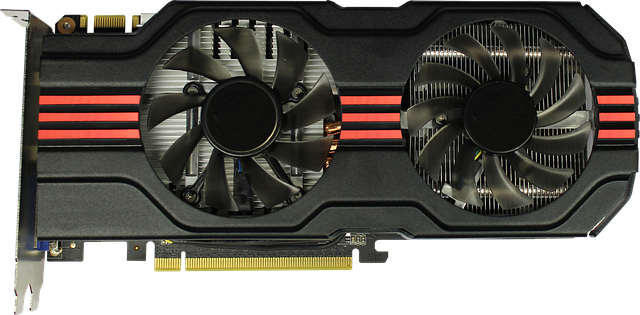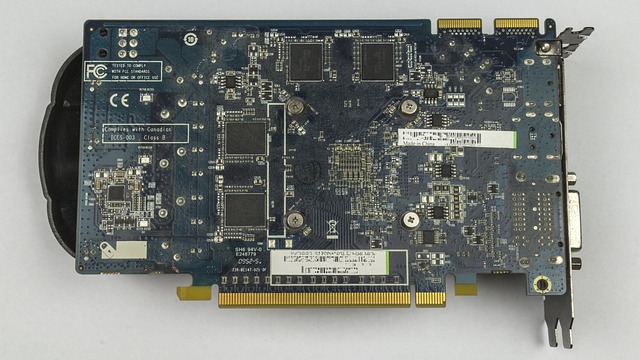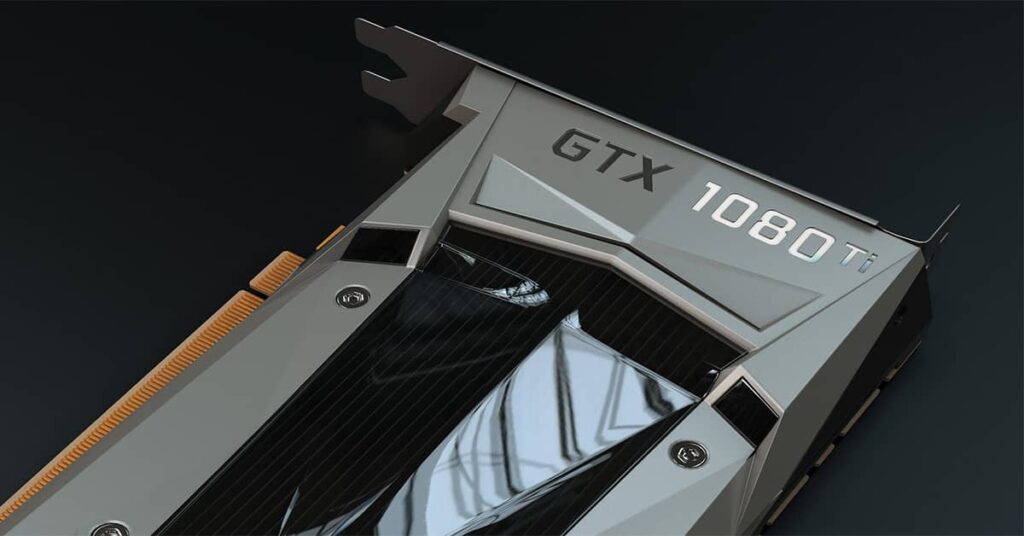Why is GPU Failing – Explained & Fixes
A Graphics Processing Unit (GPU) is a crucial component of a computer system, especially for tasks that require high-quality graphics rendering and video processing. GPUs handle complex calculations and render images, videos, and animations on the screen. They play a vital role in gaming, video editing, graphic design, and other visually demanding applications. Without a functioning GPU, these tasks can suffer from lag, low frame rates, and poor image quality.
What Is a GPU Meaning?
Before we go to the point know about the meaning of GPU. GPU long meaning is Graphic Process Unit.
Common signs of a failing GPU
It is important to identify the signs of a failing GPU to address the issue promptly. Some common signs include artifacts (visual glitches), screen freezing and crashes, overheating, and unusual noise coming from the GPU. These symptoms may appear gradually or suddenly, indicating potential issues with the GPU’s hardware or software components.
Need to address the issue promptly
Ignoring a failing GPU can lead to further damage to the computer system and compromise its overall performance. If left unresolved, a failing GPU can cause system crashes, data loss, and even permanent damage to the GPU itself. It is essential to address the issue promptly by diagnosing the problem and taking appropriate measures to fix or replace the GPU.
Understanding GPU Failing
Causes of GPU failure
Several factors can contribute to GPU failure. Overheating is a common cause, as excessive heat can damage the GPU’s delicate circuitry and components. Power supply issues, aging hardware, manufacturing defects, and physical damage can also lead to GPU failure over time.
Impact of a failing GPU on computer performance
A failing GPU can significantly impact the computer’s overall performance. The GPU’s inability to process graphics efficiently can result in slow rendering, choppy frame rates, and visual artifacts in games and other graphics-intensive applications. It can also cause system instability and frequent crashes. In some cases, a failing GPU may prevent the computer from booting up.
Identifying Signs of a Failing GPU

Artifacting (visual glitches)
One common sign of a failing GPU is artifacting, which manifests as visual glitches on the screen. These glitches can appear as distorted images, random colored pixels, flickering, or screen tearing. If you notice consistent artifacting, it is likely indicative of a failing GPU.
Screen freezing and crashes
Another telltale sign of a failing GPU is frequent screen freezing and crashes. When the GPU is unable to handle the graphics processing demands, it can cause the computer to freeze or crash, requiring a restart. If you experience regular screen freezes or crashes, it is worth investigating the GPU as a potential culprit.
Overheating
GPU overheating is a common issue that can lead to failure if not addressed. Symptoms of GPU overheating include sudden shutdowns, system instability, and decreased performance. Monitoring the GPU’s temperature using specialized software can help identify overheating issues.
Unusual noise from the GPU
Unusual noises, such as grinding or whirring sounds, coming from the GPU can indicate mechanical issues or problems with the GPU’s fan. These noises may occur due to worn-out bearings, loose components, or fan malfunctions. If you hear unusual noises emanating from the GPU, it is advisable to investigate and address the issue promptly.
Checking Power Supply
Importance of adequate power supply to the GPU
A stable and adequate power supply is crucial for the proper functioning of the GPU. Insufficient wattage or unstable power delivery can cause the GPU to malfunction or fail. It is important to ensure that the power supply unit (PSU) has enough wattage to meet the GPU’s power requirements and that all the necessary power connections are securely plugged in.
Verifying power supply wattage and connections
To check the power supply wattage, refer to the PSU’s specifications or consult the manufacturer’s documentation. Compare the wattage requirements with the GPU’s power consumption to ensure compatibility. Additionally, inspect the power connections between the PSU and the GPU to ensure they are securely connected.
Replacing the PSU if necessary
If the power supply is inadequate or faulty, replacing it with a higher wattage PSU can resolve power-related GPU issues. Consult with a professional or refer to the manufacturer’s guidelines for guidance on selecting an appropriate PSU. Upgrading to a more reliable and efficient PSU can not only resolve GPU problems but also contribute to the overall stability and performance of the computer system.
| Issue | Power Supply | Graphics Drivers |
|---|---|---|
| Importance | Stable and adequate power supply is crucial for GPU functioning | Outdated or incompatible drivers can cause GPU failure |
| Checking | Verify power supply wattage and connections | Check GPU manufacturer’s website for driver updates |
| Fixing | Replace inadequate or faulty power supply | Download and install recommended driver updates |
| Reasoning | Insufficient power supply can lead to GPU malfunction or failure | Outdated drivers can cause software-related GPU failures |
Updating Graphics Drivers
Importance of up-to-date graphics drivers
Outdated or incompatible graphics drivers can cause various issues, including GPU failure. Graphics driver updates often include bug fixes, performance improvements, and compatibility enhancements. Keeping the graphics drivers up to date ensures that the GPU operates optimally and reduces the chances of software-related GPU failures.
Checking for available driver updates
To check for available graphics driver updates, visit the GPU manufacturer’s website or use their dedicated software tools. These tools can automatically scan your system and identify the latest driver versions compatible with your GPU model. Download the recommended updates and follow the installation instructions provided.
Proper installation of driver updates
When installing graphics driver updates, ensure that you follow the manufacturer’s instructions carefully. Some driver installations may require a clean installation, which involves removing the existing drivers before installing the new ones. Pay attention to any additional settings or options during the installation process and select the appropriate options for your system.
Monitoring GPU Temperatures
How overheating can lead to GPU failure
Overheating is a major cause of GPU failure, as excessive heat can damage the GPU’s components and degrade its performance over time. Monitoring the GPU’s temperature allows you to identify and address overheating issues promptly, preventing potential failure.
Using software tools to monitor GPU temperatures
Several software tools are available that allow you to monitor the GPU’s temperature in real-time. These tools provide temperature readings, fan speeds, and other relevant information. Install one of these tools and monitor the GPU’s temperature during various activities to ensure it remains within safe operating limits.
Tips for proper airflow and cooling techniques
To prevent GPU overheating, ensure proper airflow within the computer case. Remove any obstructions that may block the airflow, such as cables or dust buildup. Positioning case fans strategically can improve overall airflow and help dissipate heat effectively. Proper cooling techniques and adequate airflow can significantly reduce the risk of GPU failure due to overheating.
Cleaning Dust and Debris

Effect of dust and debris on GPU performance
Dust and debris accumulation on the GPU’s heat sink and fans can impede airflow and lead to overheating. Regularly cleaning the GPU helps maintain optimal airflow and prevents dust from clogging the cooling system.
Using compressed air or a soft brush for cleaning
To clean the GPU, use compressed air or a soft brush to remove dust and debris from the heat sink, fans, and surrounding areas. Gently blow compressed air into the heat sink fins and fans to dislodge dust particles. Alternatively, use a soft brush to carefully brush away the dust. Be cautious not to apply excessive force or damage any delicate components on the GPU.
Caution against excessive force or liquid cleaners
When cleaning the GPU, avoid using excessive force or applying any liquid cleaners directly to the GPU. Excessive force can damage the GPU’s components, while liquid cleaners can cause corrosion or short circuits. If necessary, use a small amount of isopropyl alcohol on a clean cloth to gently wipe away stubborn dirt or thermal paste residue. Exercise caution and refer to manufacturer guidelines if unsure about the cleaning process.
Testing the GPU on Another System
Determining if the issue is with the GPU or other components
Testing the GPU on another system can help isolate the problem and identify the faulty component. If the GPU works fine on another system, the issue may lie with other hardware components, such as the motherboard or power supply.
Safely removing and reinstalling the GPU in another system
To test the GPU on another system, carefully remove it from the original system following proper ESD (Electrostatic Discharge) precautions. Install the GPU in another compatible system, ensuring all power connections and interface cables are secure. Power on the system and observe if the GPU functions properly without any issues. If the GPU exhibits the same problems on the second system, it is likely a GPU-specific issue.
Contacting the manufacturer or considering a replacement
If the GPU fails to function correctly on another system, it is advisable to contact the manufacturer’s customer support for further assistance. They may provide troubleshooting steps or recommend a repair or replacement, depending on the warranty status and the nature of the issue. If the GPU is out of warranty or the repair costs are prohibitively high, considering a replacement GPU may be a viable option.
Case Study: John’s Failing GPU
John, a graphic designer who relies heavily on his computer for his work, noticed some unusual behavior with his computer recently. His screen would freeze randomly, and sometimes he would experience crashes while working on complex design projects. Concerned about the impact on his productivity, he decided to investigate the issue further.
After doing some research, John discovered that the symptoms he was experiencing could be indicative of a failing GPU. He read about the importance of addressing the issue promptly to prevent further damage to his system. Determined to find a solution, John decided to try some troubleshooting steps before seeking professional help.
John began by checking his power supply. He knew that an inadequate power supply could cause issues with the GPU. He verified that his power supply wattage was sufficient for his system and made sure all connections were secure. However, the problem persisted, so he moved on to the next step.
Next, John decided to update his graphics drivers. He learned that outdated drivers can cause compatibility issues and impact performance. He checked for available driver updates and installed them properly. Unfortunately, this didn’t resolve the problem either.
Growing more frustrated, John started monitoring his GPU temperatures. He knew that overheating could lead to GPU failure. Using software tools, he tracked the temperature of his GPU and realized it was reaching dangerously high levels. To address this, he cleaned his GPU, removing dust and debris that had accumulated over time. This improved airflow and reduced the temperature, but the issue still persisted.
Finally, John decided to test his GPU on another system. He safely removed the GPU from his computer and installed it in his friend’s computer. To his surprise, the GPU worked perfectly fine on the other system. This indicated that the issue was not with the GPU itself, but with another component in his computer.
Feeling relieved that he had narrowed down the problem, John contacted a professional technician for further assistance. The technician diagnosed the issue as a failing power supply unit and replaced it. John’s computer was back to its optimal performance, and he could continue his design work without any disruptions.
John’s experience serves as a reminder of the importance of promptly addressing a failing GPU. Through his troubleshooting journey, he learned the significance of checking power supply, updating drivers, monitoring temperatures, and seeking professional help when needed. By taking these preventive measures, John can now enjoy a healthy and reliable GPU for his graphic design work.
Reapplying Thermal Paste
Degrading thermal paste and poor heat dissipation
Thermal paste is a heat-conductive material applied between the GPU die and the cooling system to enhance heat transfer. Over time, thermal paste can degrade, dry out, or become less effective, resulting in poor heat dissipation and increased GPU temperatures. Reapplying thermal paste can help restore optimal heat transfer and prevent GPU failures due to overheating.
Safely removing and reapplying thermal paste
To reapply thermal paste, ensure that you have the necessary tools, such as isopropyl alcohol, a lint-free cloth, and high-quality thermal paste. Carefully remove the GPU’s cooling system, following the manufacturer’s instructions. Clean the GPU die and the heat sink surface using isopropyl alcohol and a lint-free cloth to remove any residue. Apply a small amount of thermal paste to the GPU die and spread it evenly using a plastic spatula or a credit card. Reassemble the cooling system and ensure it is securely attached to the GPU.
Proper reassembly of the cooling system
When reassembling the GPU’s cooling system, ensure that all screws or fasteners are tightened properly. A loose or improperly assembled cooling system can lead to poor thermal contact and inadequate heat dissipation, compromising the GPU’s performance. Refer to the manufacturer’s guidelines or consult professional resources for specific instructions on reassembling the GPU’s cooling system.
Seeking Professional Help
Benefits of consulting an experienced technician
If you are unsure or uncomfortable performing GPU troubleshooting and repairs yourself, it is advisable to seek professional help. An experienced technician can diagnose the failing GPU accurately, identify any underlying issues, and provide appropriate solutions. They have the necessary knowledge, tools, and expertise to handle complex GPU failing problems and ensure a proper repair or replacement.
Diagnosing and repairing the GPU failing
A professional technician can perform advanced diagnostics to pinpoint the exact cause of the GPU failure. They may use specialized tools and equipment to test the GPU’s performance, check for hardware defects, and evaluate software compatibility. Based on their findings, they can recommend repairs, such as replacing faulty components, reflowing solder joints, or even replacing the entire GPU if necessary.
Preventive Measures for GPU Health
Regularly cleaning and maintaining the GPU
Regular maintenance and cleaning of the GPU can significantly extend its lifespan and prevent failures. Clean the GPU and its cooling system at least once every few months to remove dust and debris. Monitor the GPU’s temperature regularly and address any overheating issues promptly. Taking these preventive measures can help maintain optimal GPU performance and reduce the risk of failure.
Monitoring temperature and power supply
Monitor the GPU’s temperature using specialized software tools and ensure that it remains within safe operating limits. High temperatures can accelerate wear and tear on the GPU’s components and increase the risk of failure. Additionally, keep an eye on the power supply’s stability and wattage to ensure the GPU receives adequate power for optimal performance.
Proper usage and handling of the GPU
Handle the GPU with care, avoiding unnecessary physical stress or impact. Avoid overclocking the GPU beyond its recommended limits, as this can increase heat generation and potentially cause instability or failure. Use the GPU within its specified power and temperature limits to ensure longevity. Following these guidelines for proper usage and handling can help prolong the lifespan of the GPU.
Conclusion
A failing GPU can significantly impact a computer’s performance, especially for tasks that require high-quality graphics rendering. It is crucial to address any signs of GPU failure promptly to prevent further damage to the system and potential data loss. By understanding the causes and symptoms of GPU failure, users can take appropriate measures to diagnose, repair, or replace the failing GPU.
In conclusion, when faced with a failing GPU, several troubleshooting steps can be taken to identify and resolve the issue.
These steps include checking the power supply, updating graphics drivers, monitoring GPU temperatures, cleaning dust and debris, testing the GPU on another system, reapplying thermal paste, and seeking professional help when needed. Each of these steps plays a vital role in diagnosing and resolving GPU-related problems.
By following preventive measures and addressing issues promptly, users can ensure the longevity and optimal performance of their computer systems.
FAQ
What are the signs of a failing GPU?
Screen artifacts, crashes, overheating, and performance issues.
How can I diagnose if my GPU failing?
Monitor temperature, run stress tests, update drivers, and check for visual anomalies.
What causes a GPU to fail?
Overheating, power surges, manufacturing defects, and aging components.
How can I prevent my GPU from failing?
Proper cooling, regular maintenance, stable power supply, and avoiding overclocking.
What should I do if my GPU fails?
Troubleshoot drivers, check connections, contact manufacturer support, or consider replacement.
Isn’t replacing a GPU expensive?
While it can be costly, consider warranty coverage or purchasing a used/refurbished GPU.


